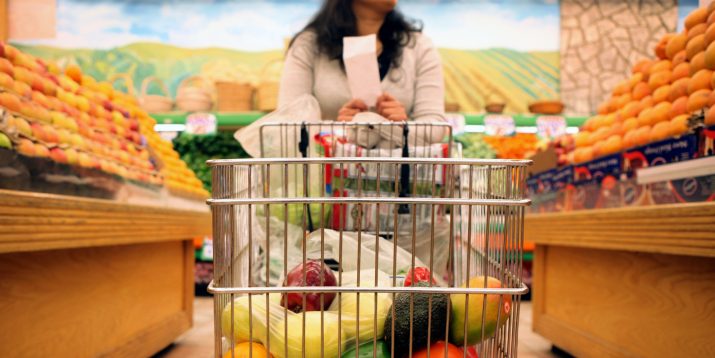Grocery shopping….it can be the bane of our existence at times.
We want to make healthy food choices and buy what is best for us and our family, but we want to keep our total bill to a manageable level. Sometimes the balancing act between good for you and good for the pocketbook can be a battle. Oftentimes we enter the grocery store with the best intentions, but we end up buying more that we need and buying more of the stuff that isn’t entirely the best for our bodies. How can we buy healthier on a budget? The following five tips will help you accomplish that goal.
Tip #1: Shop the Perimeter
Your good ol’ neighborhood grocery store features a layout that is custom made for healthy shopping. Next time you swing in to the store, check out where you can find healthy foods. Your healthiest food choices can be found on the perimeter, and here you will find your produce, fresh meat, fish and dairy. You want to concentrate your shopping in this perimeter and limit your exposure to the aisles where you will find the shelf stable foods as well as the junk foods. These foods are highly processed, chock full of sugars and salt and other additives that will declare mutiny on your body.
Tip #2: Be Savvy in Your Shopping: Have an Order
When you enter the grocery store, don’t just wonder aimlessly and throw whatever in your cart that looks good. You should have a “roadmap” of which areas that you need to focus on. The following is a suggested order that you can follow.
• Produce—spend more of your time here, since fruits and vegetables have the highest density of vitamins, minerals and other nutrients.
• Bread, Cereals and Pasta—in this area, choose whole grains since they are the least processed. Keep in mind that less sugar is better and stay away from granola since it is high in both fat and sugar.
• Meat, Fish and Poultry-be sure to choose the leanest cuts of meat as possible. If buying chicken, buy the skinless variety. Be sure to stock up on your fish since they are rich in heart-healthy omega-3 fatty acids.
• Dairy—dairy products are great sources for calcium and vitamin D. Stock up on yogurts and pre-portioned cheese if you can.
• Frozen Foods—choose whole grain waffles and bagels and 100% juices. Frozen foods are great to stock up on, especially in the winter months.
• Canned and Dried Foods—when you shop these aisles, focus on buying canned vegetables, beans, and fruits. Try to buy those items with little or no salt.
Tip #3: Plan Ahead
Successful grocery shopping takes planning. The best way to choose the foods that are best for you is to plan out your meals for the week. Once you have decided what you are going to prepare, create your shopping list. This may take some time to get used to in the beginning, but it will save you from running back to the store to buy those items that you missed the first time around. Another tip….don’t shop when you are hungry. While it may sound funny, shopping on an empty stomach may lead to impulse buys that may not be the healthiest for you—and you will be spending more than what you may have budgeted.
Tip #4: Coupons Are Your Friend
We all want to save money when we shop, right? In order to get the most back out of your buck, use coupons and check the weekly grocery store ads. Most grocery stores will have a display of their specials and sales when you walk in the door. If you are using coupons, a simple rule of thumb is to use a coupon for an item that you truly need. Many people end up buying things they never use because “it was on sale”. These are extra purchases that cost you money, not save you money.
Tip #5: Look for Packages and Portions
A major component of healthy eating is sensible portions. Single-serve packages of precut fruit or carrots is a great way to ensure that you and your family are getting the recommended serving of fruits and vegetables you need in a day. With precut and packaged items, there is little chance that food will go to waste.
By following these basic yet important steps, you can begin to fill your pantry and refrigerator with better food choices for you and your family. Not only will you eat and feel better, your wallet and bank account will be healthier as well. All it takes is some preparation, a game plan and the discipline to stick with it and follow through. Instead of being a chore, grocery shopping can actually start being fun.
